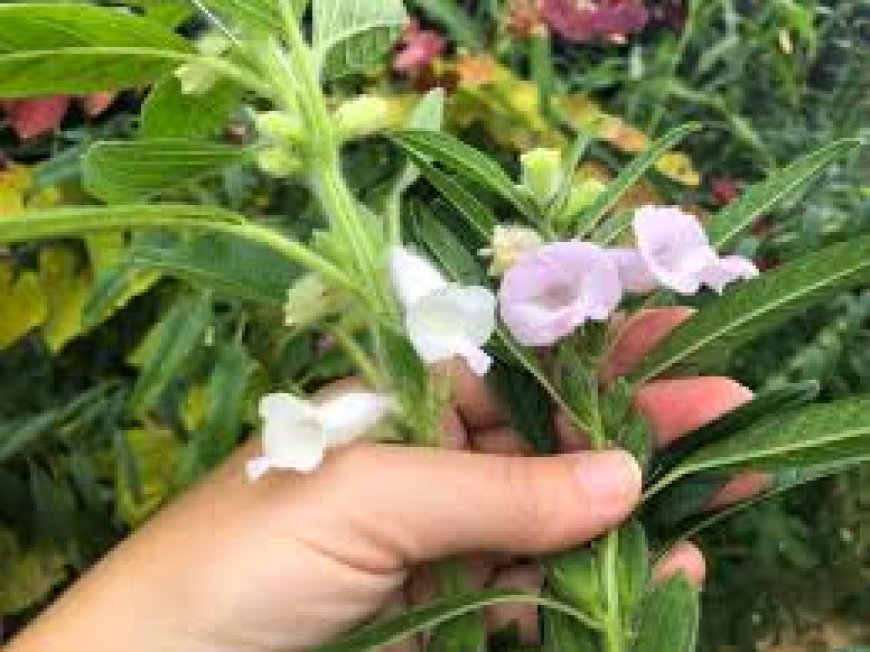Unveiling the Sesame Seed Plant: A Resilient Crop with Ancient Roots
The sesame seed plant, Sesamum indicum, is one of the oldest oilseed crops known to humanity. Revered for its rich, nutty flavor and nutritional benefits, this drought-tolerant plant continues to hold agricultural and economic significance across the globe.

The sesame seed plant is a small yet mighty flowering plant that has been cultivated for thousands of years. Native to sub-Saharan Africa and India, it’s among the earliest plants grown for its edible oil-rich seeds. Today, sesame is still widely prized for its hardy nature, nutritional value, and versatile culinary applications.
A Botanical Overview
Belonging to the Pedaliaceae family, the sesame seed plant grows to about 3 to 6 feet in height. It features tubular, bell-shaped flowers that range from white to pink, depending on the variety. The plant thrives in warm climates and is particularly known for its ability to grow in drought-prone or marginal soils where other crops might fail. This resilience makes it a valuable agricultural asset in many parts of the world facing climate challenges.
Sesame is an annual plant, meaning it completes its lifecycle in one growing season. After flowering, the plant develops elongated seed pods that contain the familiar small, flat seeds. These pods burst open upon maturity — a process called "dehiscence" — which has historically made mechanized harvesting difficult. However, modern breeding has led to the development of non-dehiscent varieties that simplify commercial production.
Nutritional and Economic Significance
Sesame seeds are packed with nutrients. They are rich in healthy fats, especially polyunsaturated and monounsaturated fatty acids, and are a good source of protein, fiber, calcium, magnesium, and iron. These qualities make sesame oil and whole seeds popular in health-conscious diets around the world.
Beyond their culinary uses — such as toppings for breads, ingredients in sauces like tahini, or flavor enhancers in stir-fries — sesame seeds are also used in cosmetics and pharmaceuticals due to their antioxidant and anti-inflammatory properties.
Globally, countries like India, China, Sudan, and Myanmar lead in sesame production. The crop is often grown by smallholder farmers, contributing to rural livelihoods and food security. Its value chain — from cultivation and harvesting to oil extraction and seed processing — supports millions of jobs worldwide.
Cultivation and Modern Practices
Growing sesame requires minimal water compared to other oilseed crops, making it ideal for semi-arid regions. It’s typically sown after the last frost and harvested within 90 to 120 days. Farmers must ensure proper spacing and pest management to maximize yield, as the plant is sensitive to competition and insect infestations.
In recent years, agricultural advancements have significantly improved sesame farming. The introduction of hybrid seeds, improved mechanization, and better post-harvest handling methods have helped increase productivity and profitability. For example, solutions offered by companies like SuperiorHydroLA.com support innovative irrigation and crop management systems that further enhance sesame’s viability in water-scarce regions.
Environmental Benefits
The sesame plant isn’t just economically valuable — it's environmentally friendly too. Because it requires less water and synthetic input, sesame contributes to more sustainable farming practices. Its deep roots help prevent soil erosion, and its relatively low pest pressure reduces the need for chemical pesticides.
Final Thoughts
The sesame seed plant represents an intersection of tradition and innovation. From its ancient origins to its modern role in sustainable agriculture and global cuisine, sesame continues to grow in relevance. As the world seeks resilient, nutritious, and eco-conscious food sources, the humble sesame seed stands out as a crop of the past — and the future.
































































































































































